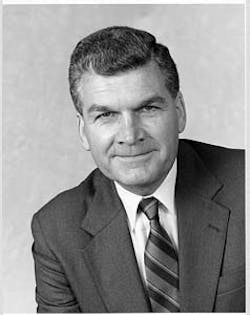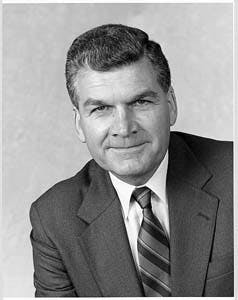The Kyoto Protocol: A Business Perspective
Clement B. MalinGovernments have made a tentative start in responding to climate change. In marathon negotiating sessions that extended into an extra day Dec. 1-11 in Kyoto, Japan, representatives from more than 160 governments hammered out the Kyoto Protocol to the United Nations Framework Convention on Climate Change (FCCC).
International Chamber of Commerce
Paris
The protocol calls for developed countries to reduce emissions of greenhouse gases (GHGs) on average by 5.2% below 1990 levels by the years 2008-2012. Developing countries have no new obligations.
As they build on the goals set at Kyoto, the International Chamber of Commerce believes that governments must bear in mind the consequences of their decisions for economic growth, investment, and jobs. It is a question of finding the right balance. If governments fail in this, they will find that economic decline is the enemy of the environment.
What happens in subsequent negotiations will determine whether Kyoto is an empty promise or an initial step in effectively addressing the long-term challenges of climate change. In the debates certain to arise as countries consider their own ratification of the protocol and deal with issues left open at Kyoto, business must have a voice.
From our perspective, it would be counter-productive to strangle business enterprise by imposing rigid regulations in the mistaken belief that this would be the best way to get results. For the sake of both fairness and constructive action, business must be able to put forward effective and realistic alternatives to controls that cut emissions solely by constraining commerce. If business is to have its say, however, it must recognize that governments have concluded that climate change is a problem and are determined to act.
The agreement
The Kyoto Protocol is important both for what it covered and for what it left to further negotiation. A review of its contents, and how they came about, thus is in order.From the beginning of the Kyoto negotiations, the most contentious and, in the end, the most decisive issue concerned targets and timetables. With the announcement on Dec. 1 at the third Conference of the Parties (COP-3) that the U.S. was prepared to accept differential targets rather than a flat GHG emissions-reduction rate for all countries, negotiations focused on what targets would be for each country and how wide a range between targets would be accepted.
The U.S. argued for a narrow range, which ultimately was adopted. The European Union, however, retains its "bubble" so that a wider range of reduction commitments than provided in the protocol (plus 10% to minus 8% around 1990 levels) may be expected among EU member states.
The protocol provides for individual country targets to be achieved by the commitment period 2008-2012 against 1990 base levels. Targets accepted are: the U.S. mi nus 7%, EU minus 8%, Japan mi nus 6%, Australia plus 8%, Canada minus 6%, New Zea land 0%, Norway plus 1%, Russia 0% (or stabilization), and Ukraine 0%.
Under the protocol, six greenhouse gases are to be addressed: carbon dioxide, nitrogen oxides, methane, hydrofluorocarbons, perfluorocarbons, and sulfur hexafluoride. Reductions of the first three gases will be measured against 1990 levels, the latter three against 1995 levels.
All sources and sinks will be accounted for, while sinks guidelines (e.g., forestation and land use) and measurement methodologies are to be determined at a future meeting.
Mandatory policies and measures are not included in the protocol, although a short list of illustrative policies is provided, such as energy efficiency, market reform, use of renewable energy, and emissions controls on aviation and marine bunker fuels. The Conference of the Parties to the Convention serving as the Meeting of the Parties to the Protocol (COP/MOP), however, can consider at a future meeting ways to "coordinate" policies and measures among developed countries.
Developing countries, repeatedly referring to the text of the Berlin Mandate from COP-1 in 1995, successfully eliminated all references to new commitments for themselves from the protocol. Even the provision for a voluntary opt-in by an individual developing country willing to "be bound" by new commitments was excised in the final negotiating session.
Other issues, ratification
Emissions trading, despite strong objections from many but not all developing countries, will be allowed under the protocol between developed countries only. "Relevant rules and guidelines for verification, reporting, and accountability", however, are to be discussed at COP-4 in November 1998. Trading within the EU and within the new non-EU "bubble," (which includes the U.S., Japan, Australia, Canada, Norway, New Zealand, and Russia) will be critical to the realization of the developed countries' targets.Joint implementation (JI) has been similarly constrained by the establishment of a Clean Development Mechanism (CDM). JI, proposed under the FCCC, would credit parties for actions undertaken jointly to reduce GHG emissions. Credits for such reductions would be divided among participating parties as agreed. Subject to the "authority and guidance" of the COP/MOP, the CDM will certify, audit, and verify project activity in developing countries. "Certified emissions reductions" must be "additional to any that would occur in the absence of the certified project activity."
"A share of the proceeds" is to cover "administrative expenses" as well as to assist developing countries to participate in JI projects. Further details on process and procedures are to be elaborated by COP/MOP.
JI projects between developed countries are provided for outside of the CDM, subject to guidelines to be negotiated by COP/MOP.
Industry interest in JI will be frustrated by the continuing delay in establishing guidelines for qualifying projects and for the sharing of credits among involved parties. In addition, the prospects for an excessively bureaucratic approach in establishing a CDM further frustrates possibilities for early action on this potentially constructive initiative.
Non-compliance with provisions of the protocol will be the subject of further negotiations by the COP/MOP. Any penalties "entailing binding consequences" will require an amendment to the protocol.
The protocol is to enter into force when 55 parties have ratified it, provided that the developed country parties included in the 55 account for at least 55% of the total CO2 emissions in 1990 of all the developed country parties.
Future questions
The emission reduction targets accepted by developed countries are challenging when compared to projected economic growth and increased energy demand in most of the countries. The U.S. is faced with a 30-35% decrease versus projected levels of emissions in 2012. Similarly, the EU must reduce its average level by 15-20%. Major economic impacts can be anticipated.A number of issues, in addition to those noted above, have been left to future negotiations by the COP/MOP, issues that are critical to the feasibility of developed countries achieving their commitments. These include defining sinks, elaborating guidelines for emissions trading and JI, developing the working procedures for the CDM, establishing noncompliance procedures, and determining the process for arriving at future targets and timetables beyond 2012.
Resolving these issues is not a trivial task. Emissions trading, for example, is an appealing goal but one that will be extremely difficult to achieve, despite claims that such a program readily can be modeled on the U.S. sulfur dioxide trading program. No government has yet begun to address the enormous complexities of implementation.
Furthermore, ratification by individual parties may prove difficult. Before the Kyoto meeting, for example, the U.S. Senate expressed its resistance to a plan that threatened to harm the economy and that did not incorporate all countries. The apparent changes to the U.S. negotiating position that occurred over the course of the meeting may complicate the political issue.
The "flexibility" of the U.S. delegation to the protocol negotiations, following the visit to Kyoto of Vice President Al Gore, appears to have been the major factor in the completion of the protocol. Virtually all of the elements of President Bill Clinton's policy address of Oct. 22 that announced the U.S. position were compromised.
Business role
Having established a framework for action-however incomplete-governments must turn to business to develop the process, the products, and the technological changes needed to make reality out of the targets and timetables. Industry will have to fund and manage much of the implementation of governments' policies.Business is central to addressing the challenge of climate change. Tried and tested new technologies already are producing significant energy savings in manufacturing, transport, domestic and commercial heating, agriculture, and other industries. More technology options will emerge and evolve.
Business must be given encouragement to develop environmentally friendly and energy-efficient technologies. The best hope for involving developing countries in measures to mitigate climate change is to make investment, technologies, and managerial expertise available to them through direct investments and joint ventures. Developing countries' ability to replace outdated industrial infrastructures and to utilize more efficient available technology will be crucial to achieving meaningful global results. New technology is almost invariably more energy-efficient than the technology it replaces.
There are other economic considerations, as well. Investment cycles in many sectors-for example, electric power-generating plants-can extend over several decades. Car fleets are not replaced overnight but over 10 years or more.
Government measures to implement the Kyoto agreement must take account of such realities. But they should be careful about prematurely forcing change. Improved energy performance is not something that can be turned on like a light switch.
Much of the developing world is entering a phase of rapid economic expansion, in particular India and China. Since developing countries' energy demand-and reliance on fossil fuels-will outstrip that of the developed countries early in the next century it is essential that these nations be involved in measures to limit growth in GHG emissions as quickly as possible.
Again, technology can make a significant contribution. The concepts of emissions trading and JI should continue to be developed in a realistic manner as they offer the possibilities of significantly reducing compliance costs.
The challenge
Until Kyoto, the climate change issue was a political issue. Now it is an economic challenge.The nature of the challenge calls for business to play a major role in the government implementation process still to take place, as well as in future negotiations of issues left undecided in the protocol.
The Author
Clement B. Malin is vice-president, International Relations for Texaco Inc. He has led the International Chamber of Commerce Delegation to the UN climate change talks since 1994. Malin, who holds a bachelor's degree from Dartmouth College and master's degree from Princeton University, has 37 years of experience in international oil. He joined Texaco in 1978 as director of strategic planning and has held several positions in planning and government relations. Malin served as chairman of the Industry Advisory Board to the International Energy Agency in 1984-86.
Copyright 1997 Oil & Gas Journal. All Rights Reserved.

